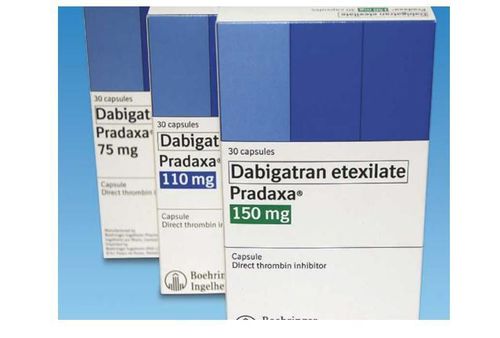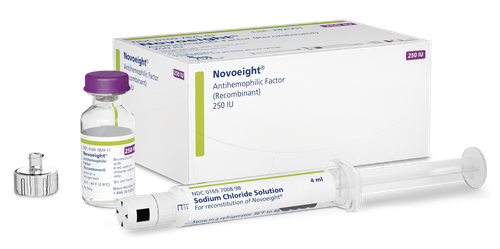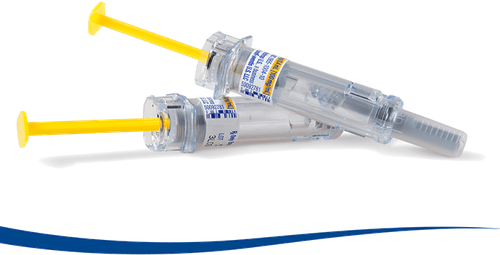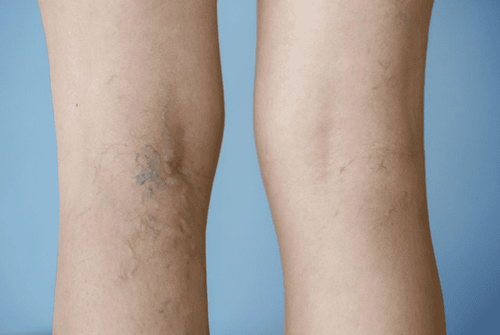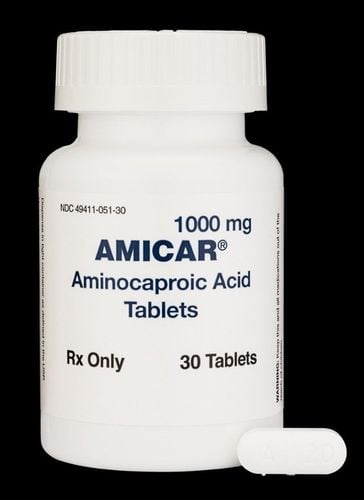This is an automatically translated article.
The article was consulted with Master, Doctor Tran Hong Nhat - Interventional Cardiologist - Cardiovascular Center - Vinmec Central Park International General Hospital.Adequate initial anticoagulation therapy for DVT is always recommended to prevent the development of thrombosis and pulmonary embolism. However, the choice of regimen depends on the individual circumstances as well as consider the use of thrombolytics if DVT progresses to serious complications.
1. Initiate treatment with parenteral anticoagulants
Anticoagulant therapy is the mainstay of treatment in patients with acute lower extremity venous thrombosis, including intravenous unfractionated heparin and low molecular weight heparin.1.1. Intravenous unfractionated heparin Unfractionated heparin is a sulfated glycosaminoglycan that exerts anticoagulant effects primarily by binding to antithrombin and causing structural changes that accelerate the rate at which antithrombin inhibits coagulation enzymes. .
In the treatment of acute lower extremity deep vein thrombosis, intravenous unfractionated heparin is often used by continuous infusion, a method that has been shown to reduce the spread and recurrence of venous thrombosis. lower extremity deep vessels as well as symptoms and patient mortality.
During the use of unfractionated heparin, patients should be monitored for dosage and coagulation function within therapeutic thresholds to promptly adjust due to significant changes in individual anticoagulant responses. multiplied by heparin. It is generally recommended to use a therapeutic range of aPTT (patient/control) ratio of 1.5 to 2.5, which corresponds to a plasma concentration of heparin from 0.2 to 0. ,4 U/mL by protamine titration. The relationship of aPTT to heparin levels depends on the aPTT reagent and coagulation meter used
In clinical practice, clinicians treating acute lower extremity DVT usually give undifferentiated heparin. Initial dose interval is 5000 units, then try aPTT every 6 hours to adjust dose.
1.2. Low-molecular-weight heparin Low-molecular-weight heparin products are produced by controlled unfractionated enzymatic or chemical degradation. Due to its reduced size and charge compared with unfractionated heparin, low-molecular-weight heparin is less susceptible to nonspecifically binding to endothelium, macrophages, and other heparin-binding plasma proteins than antithrombin.
Consequently, the improved bioavailability, longer half-life and dose-independent renal clearance of low molecular weight heparin make anticoagulant effects more predictable. It also becomes simpler to use subcutaneous injections based on weight, no need to monitor blood tests. The commonly recommended therapeutic dose of low molecular weight heparin is 0.6 to 1.0 U/mL when administered twice daily and 1.0 to 2.0 U/mL when administered once daily.
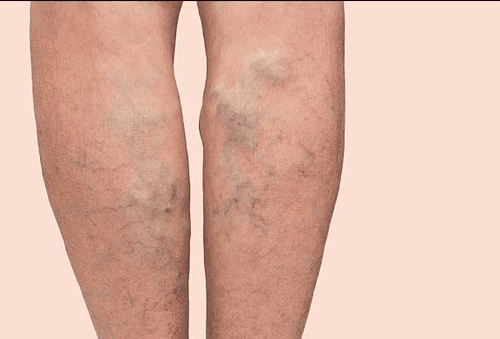
2. Non-hemorrhagic complications of anticoagulation therapy
Although bleeding is the most common side effect of anticoagulant therapy, treatment with unfractionated heparin may also be associated with other complications. This is due to the nonspecific protein binding of unfractionated heparin and is less common with low molecular weight heparin.Heparin-induced thrombocytopenia Heparin-induced thrombocytopenia is a clinical syndrome that usually occurs 5 to 10 days after exposure to heparin, although may develop more rapidly in patients with prior exposure to heparin. heparin within 100 days.
In 90% of cases, the platelet count falls to < 150,109/L but the initial platelet count drops by 50%, so this complication should be considered early. Therefore, platelet counts should be monitored during treatment with unfractionated heparin for early detection of thrombocytopenia, preferably at least every other day between days 4 and 10 of treatment.
Osteoporosis Another complication of heparin therapy, both unfractionated and low molecular weight, with long-term use is osteoporosis. This is usually not a major concern in most patients with venous thromboembolism of the lower extremities because it is only treated for a short period of time during the acute phase.
Consider fibrinolytic therapy:
By converting plasminogen to plasmin, thrombolytics have the potential to accelerate thrombolysis in patients with lower extremity venous thrombosis.
In clinical practice, fibrinolytics can be administered either systemically or locally by intravenous catheters directly into the thrombus, rapidly reducing the patient's symptoms and associated complications.
3. Treatment of deep vein thrombosis of lower extremities in acute stage in pregnancy
The selection of the optimal treatment for women with deep vein thrombosis of the lower extremities during pregnancy must take into account changes in the mother's body and the potential for harm to the fetus.While the placental-crossing vitamin K antagonists of coumarin have the potential to cause fetal bleeding and teratogenicity, both heparins are unfractionated heparin, low-molecular-weight heparin does not cross the placental barrier. Therefore, these two types of heparin can be used for primary treatment and secondary prevention of deep vein thrombosis of the lower extremities in pregnancy.

4. New antithrombotic agents for the treatment of acute lower extremity deep vein thrombosis
The possibility of an increased understanding of the mechanism of thrombus formation has led to the development of new anticoagulants designed to target specific clotting factors. Accordingly, direct thrombin inhibitors (dabigatran etexilate) and direct factor Xa inhibitors (eg, rivaroxaban, apixaban, and edoxaban) were introduced for use in the treatment of lower extremity DVT. the acute phase right from the beginning without using heparin but still ensuring rapid effect.Besides, an advantage when using new antithrombotic drugs is that they are completely administered orally, the dose is predetermined and there is no need to monitor the coagulation function. However, this class of drugs should be used with caution in patients with renal impairment, due to limited safety evidence in studies.
5. Non-pharmacological treatments
In addition to anticoagulation and fibrinolytic therapy, patients with venous thrombosis of the lower extremities are advised to have absolute bed rest during the acute phase. Elevating the leg and resting it when the leg is severely swollen can help relieve the initial symptoms.However, limited bed mobility has been shown to be associated with increased thrombus transmission and does not appear to reduce the incidence of pulmonary embolism. Meanwhile, some later evidence suggests that early mobilization can also help reduce pain and swelling more quickly. Therefore, the routine indication of bed rest for the treatment of acute lower extremity deep vein thrombosis is no longer applicable to all patients.
In summary, treatment of deep vein thrombosis of the lower extremities in the acute phase is mainly thrombolytics and anticoagulants with the goal of rapidly dissolving the thrombosis, minimizing the risk of progression to pulmonary embolism. As the coagulation mechanism is more deeply understood, new generations of drugs are born, which simplify treatment, increase anticoagulant effectiveness as well as ensure patient safety.
Please follow the website: Vinmec.com regularly to update many other useful information.
Please dial HOTLINE for more information or register for an appointment HERE. Download MyVinmec app to make appointments faster and to manage your bookings easily.
References: ahajournals.org, medscape.com, ncbi.nlm.nih.gov, timmachhoc.vn, vnha.org.vn




